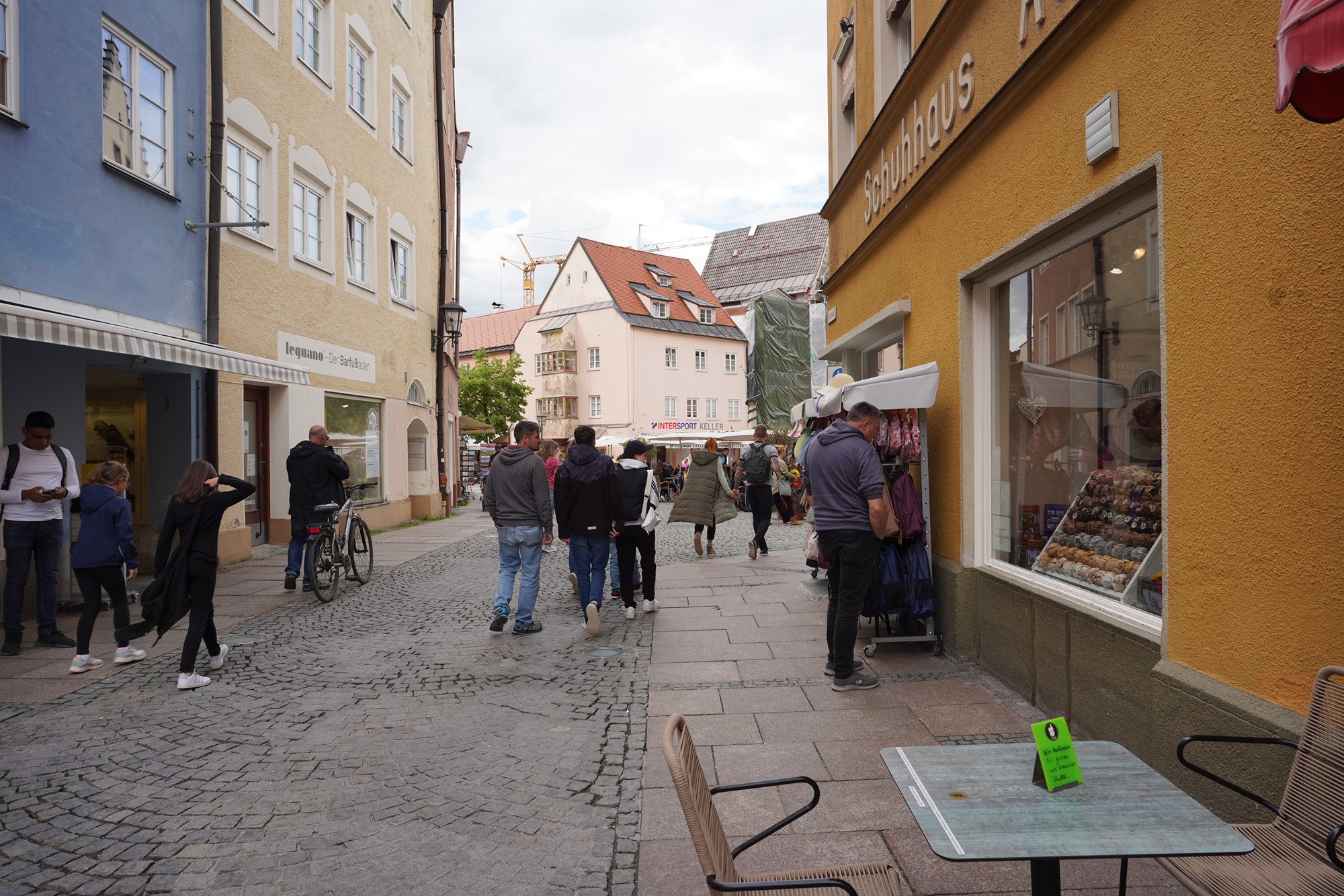Fussen Walk, Germany
Füssen is a charming town in Bavaria, Germany, located near the Austrian border. It’s famous for its proximity to the Neuschwanstein Castle. 918
Franciscan Monastery of St Stephen: Franziskanerpl. 1, 87629 Füssen, Germany
Heilig-Geist-Spitalkirche: Spitalgasse 2, 87629 Füssen, Germany
Benedictine monastery of St. Mang: Lechhalde 3, 87629 Füssen, Germany
Hohes Schloss: Magnuspl. 10, 87629 Füssen, Germany
Date Picture Taken: May, 2024
Füssen’s old town is a maze of narrow, cobblestone streets lined with colorful, pastel-painted buildings. The town’s history dates back over 700 years, and it has been a center for violin making and art for centuries.
I stayed in Fussen to visit Neuschwanstein Castle and did not expect much about the town. It turns out that the city is charming and has many old-style German buildings.
The town is small and does not need a detailed plan route to see the town, so I wander around the city to see it.



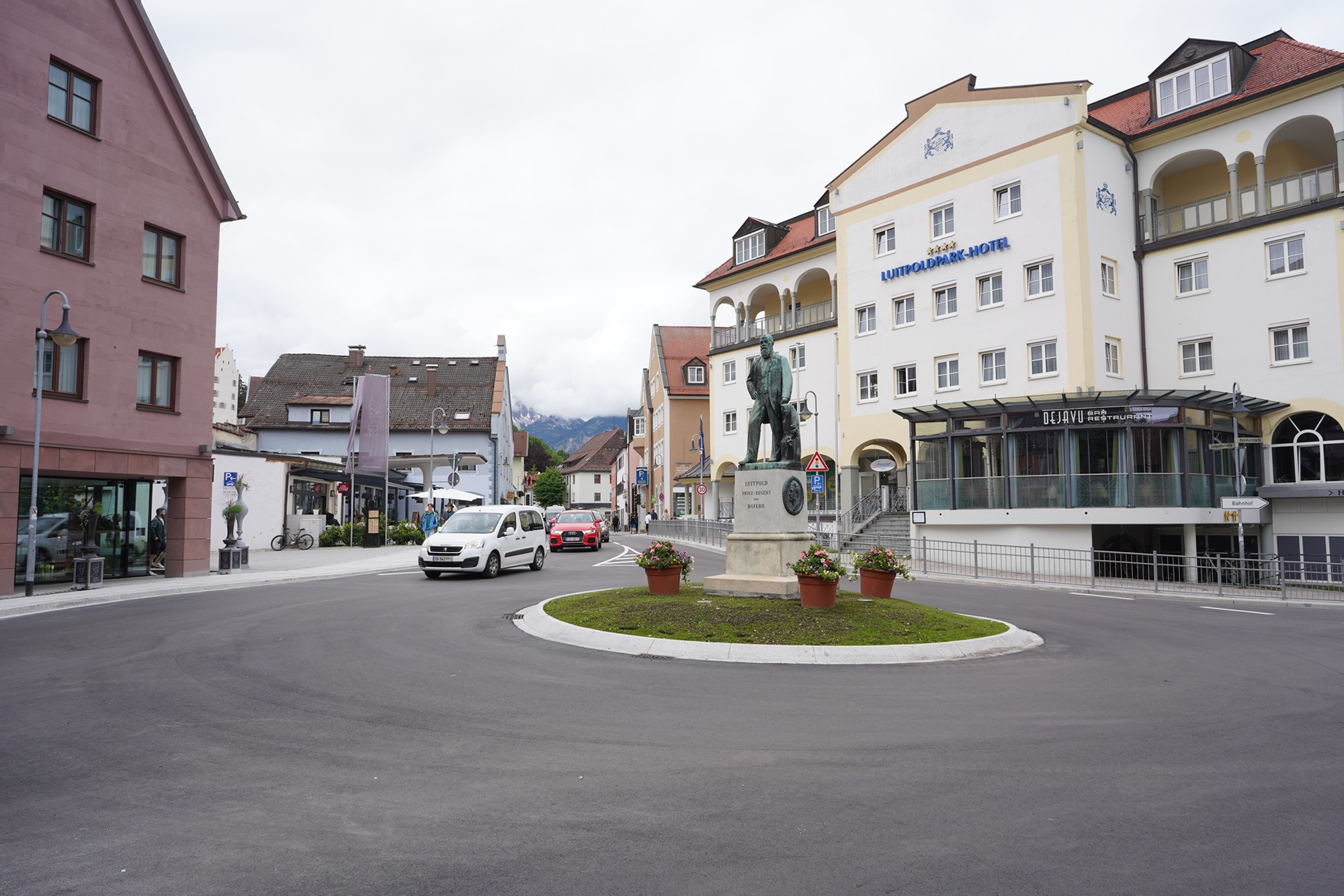















There was a small side street before the hill, so I took the side street before I walked down the hill.



It led to this area, which looked similar to the other area, so I turned back.


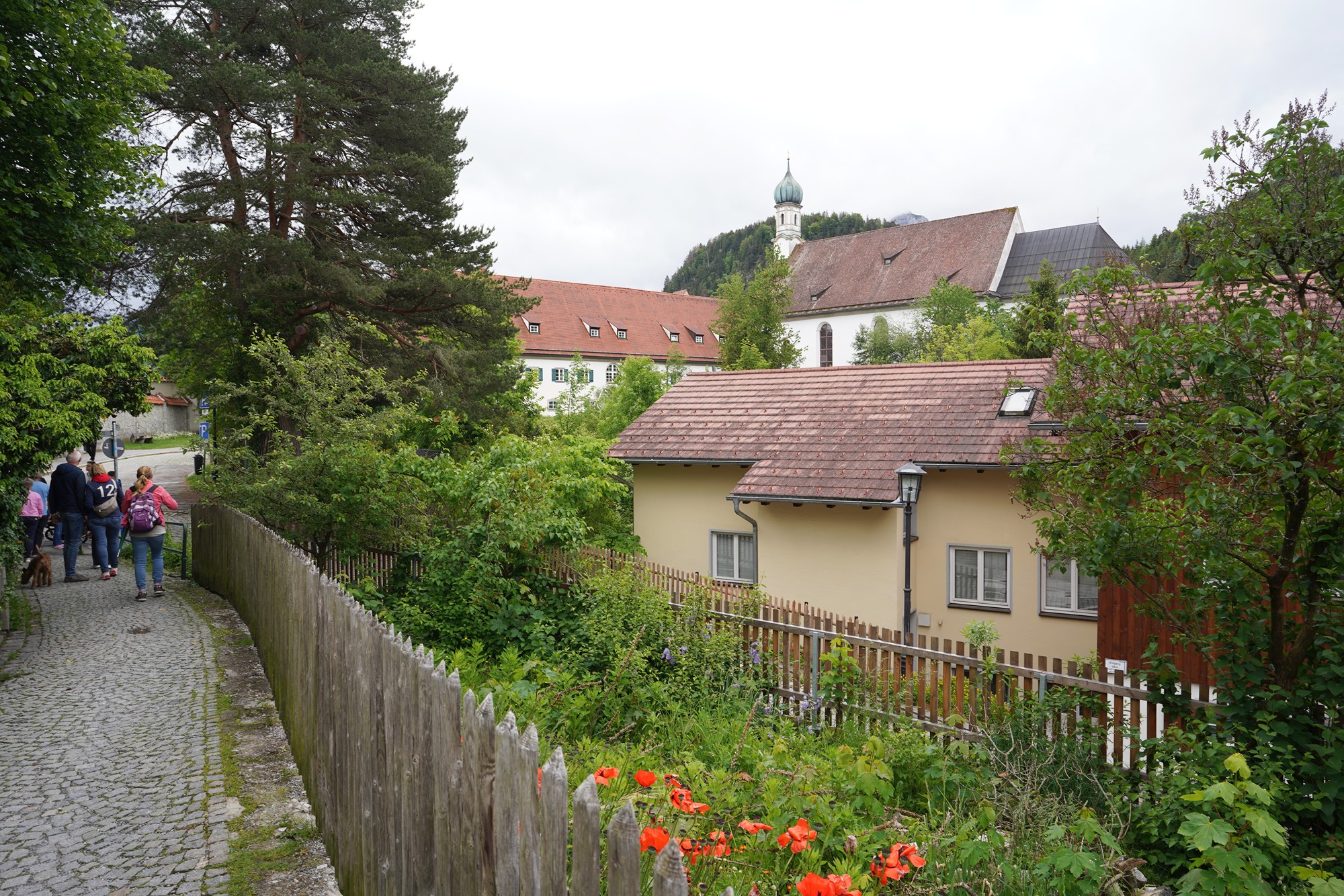



Kirche St. Sebastian Catholic Church Cemetery.
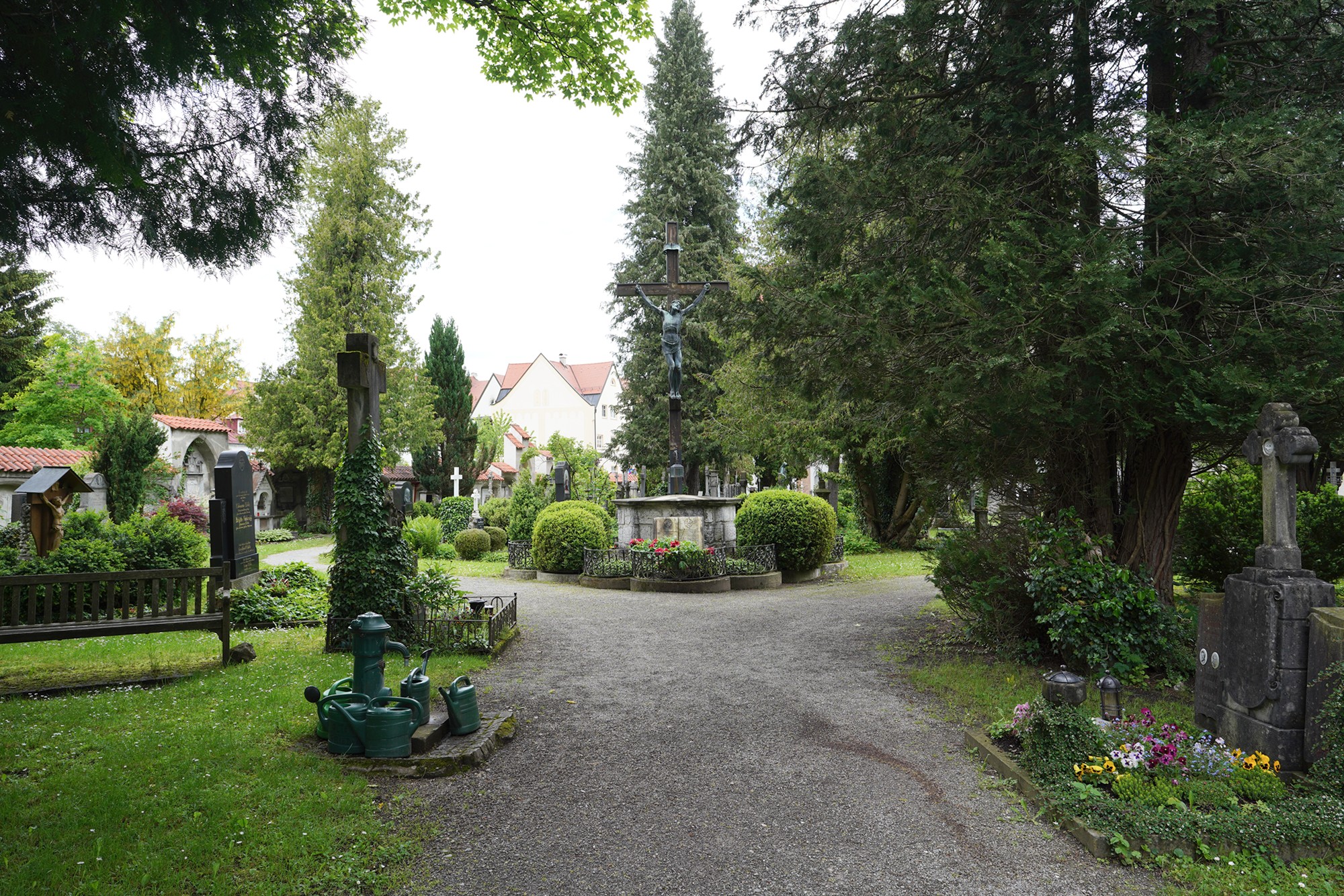

And the next building is Franciscan Monastery of St Stephen. The Franciscan Monastery of St. Stephen was founded in the early 17th century, with its origins linked to the Counter-Reformation, a movement within the Catholic Church aimed at reforming its practices and countering the spread of Protestantism.



The monastery’s cloister is a peaceful, meditative space where the monks used to walk and pray. It surrounds a small garden that adds to the serenity of the site.



I came back to this hill and walked down


Lech River

Under the Lechbrücke Bridge

Walked up from under the bridge to the bridge



Looked to the riverside direction from this side of the bridge

The other side leads to the center of the town

I walked to the riverside direction



Then I turned around and walked toward the city center


I turned around and looked back and found this ornated church.

It is Heilig-Geist-Spitalkirche Catholic Church. The Heilig-Geist-Spitalkirche was built in the early 18th century, between 1706 and 1717, on the site of an older medieval hospital church. The church was part of the Heilig-Geist-Spital (Holy Spirit Hospital), which was a charitable institution founded in the 15th century. The hospital served the local community by providing care for those in need, including the sick, elderly, and poor.
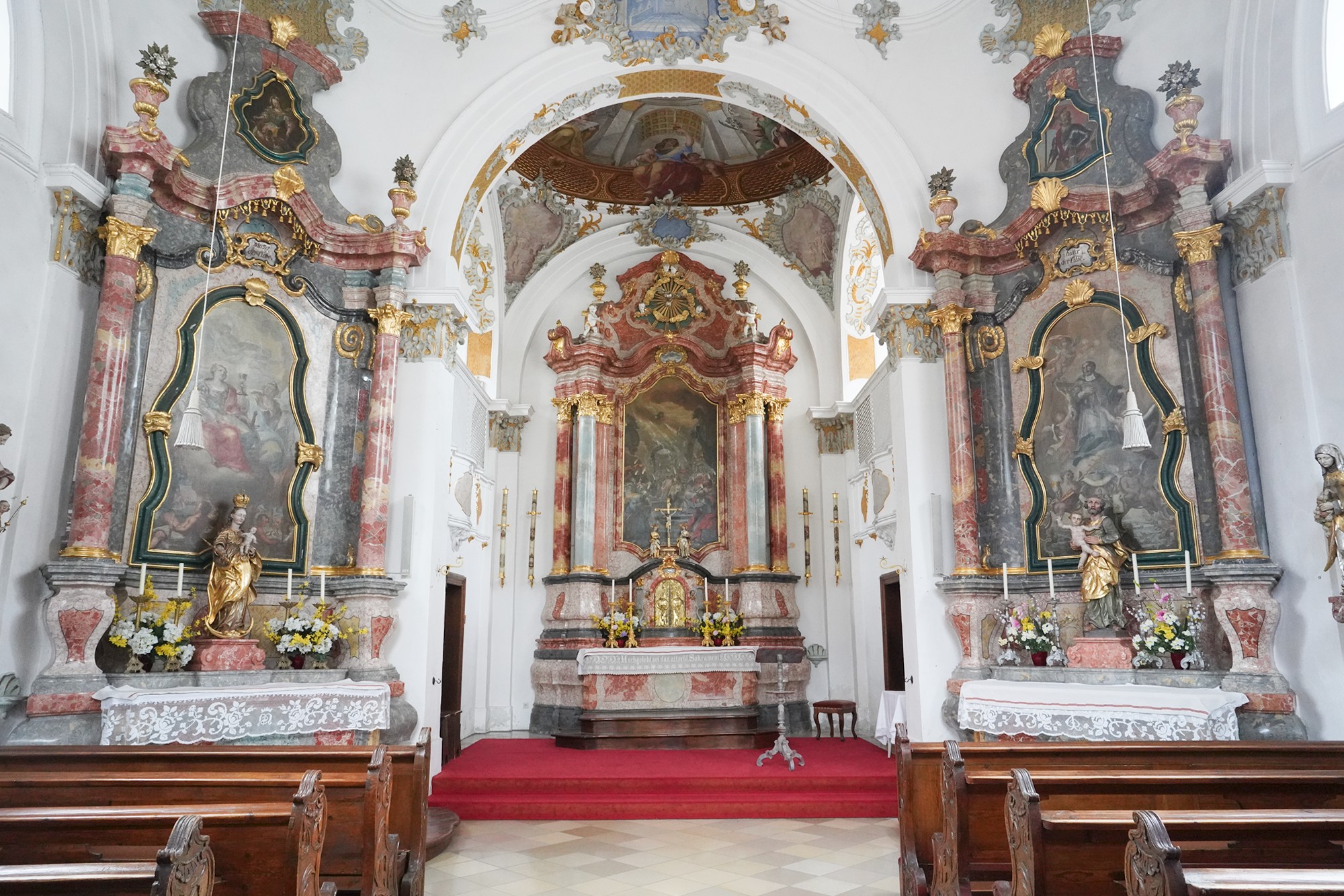

Out of the church

and then looked back


Kept walking toward the city center
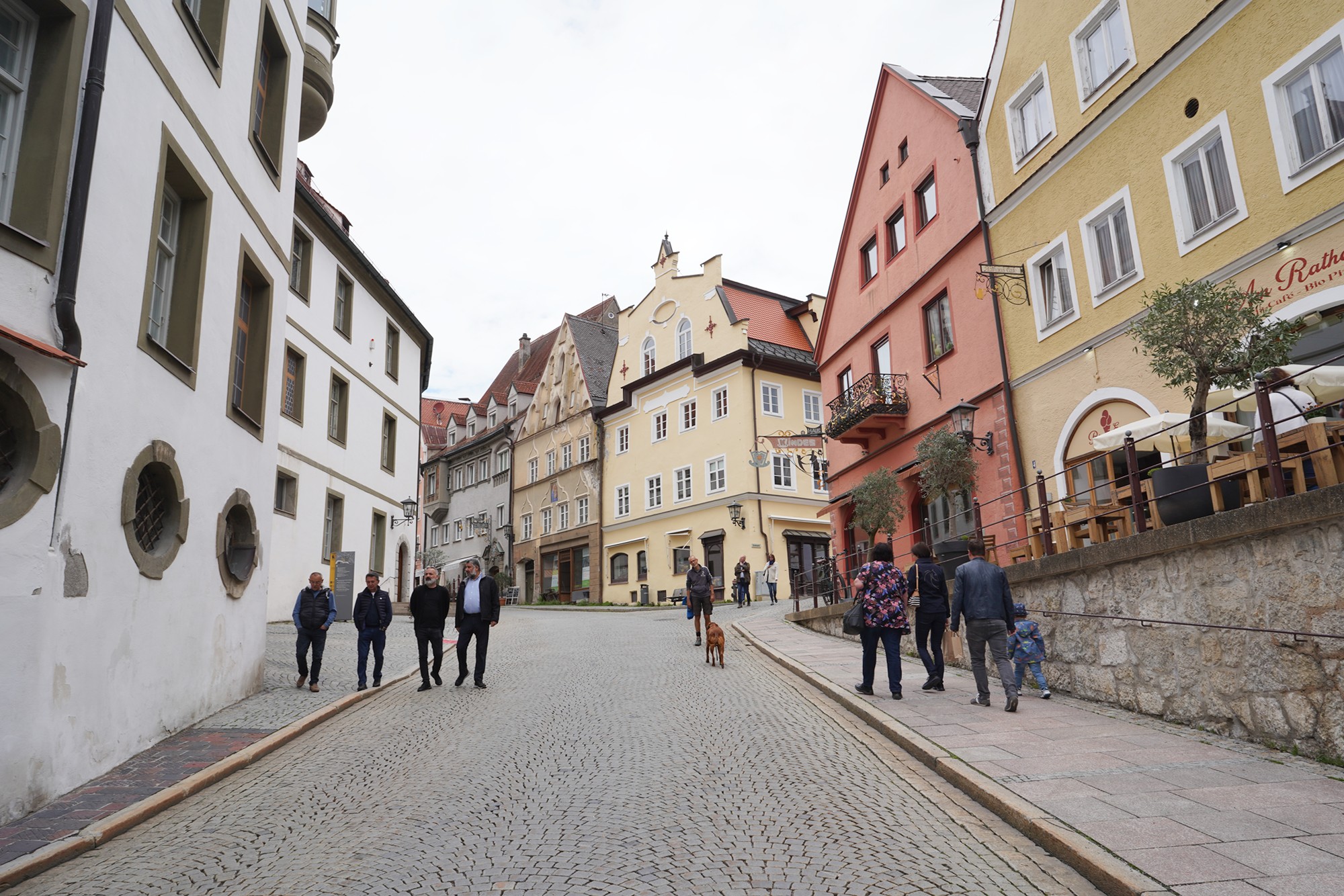
Across the Heilig-Geist-Spitalkirche Church is Benedictine monastery of St. Mang.
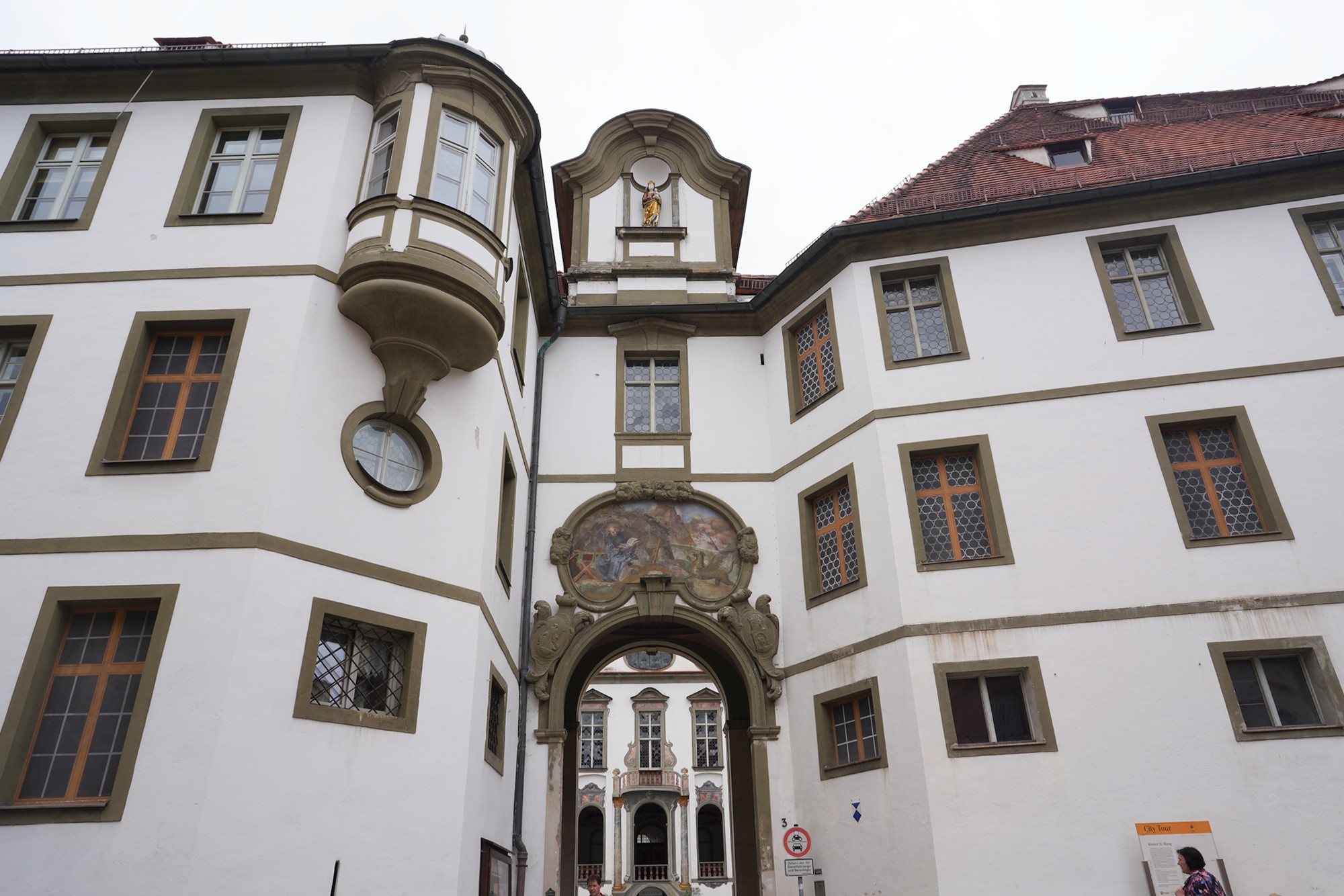


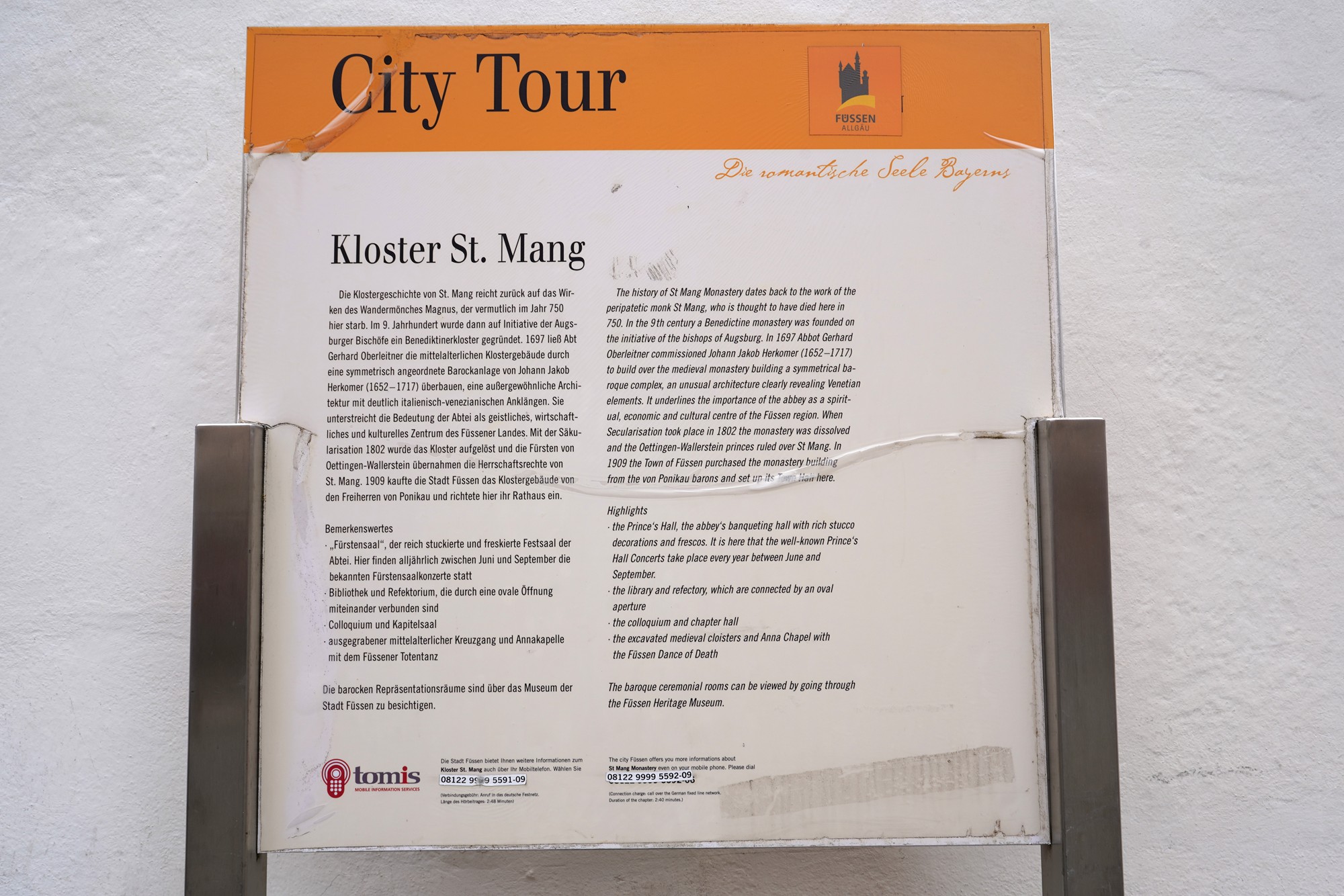
The monastery has a rich history that dates back over a millennium, and today it serves as a cultural hub, housing a museum and other attractions that reflect the region’s religious, artistic, and historical heritage.

The monastery was founded in the 8th century by St. Magnus of Füssen, a missionary monk who is believed to have come from the Abbey of St. Gall in Switzerland. St. Magnus, known locally as St. Mang, is considered the patron saint of Füssen. He established the first monastic community on the site, which later grew into a significant Benedictine abbey.


Looked back at the entrance

The monastery now houses the Museum of Füssen, which offers a fascinating look at the history of the abbey and the town. The museum’s exhibits include religious art, historical artifacts, and displays on the town’s musical heritage, particularly its tradition of lute and violin making.
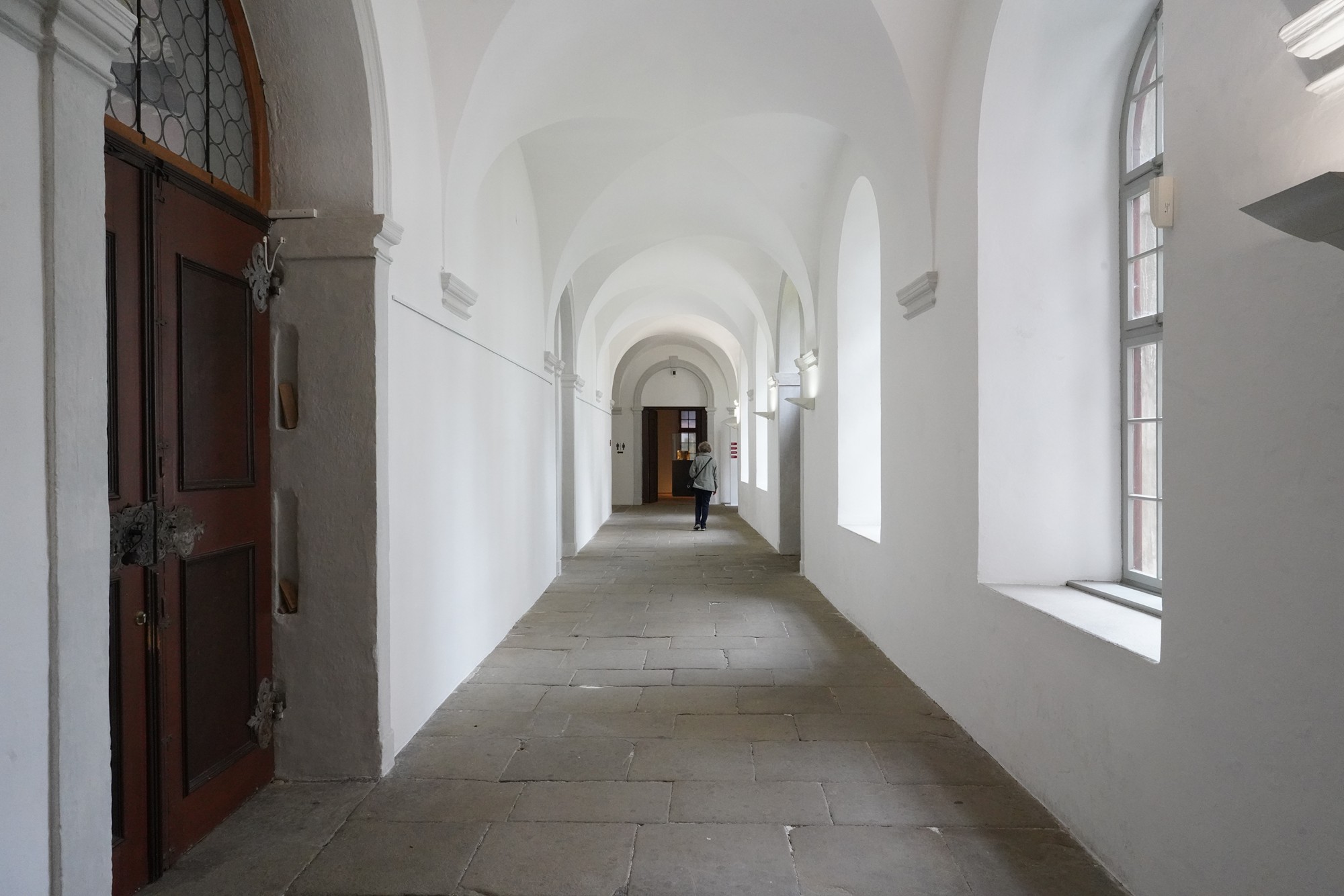























The monastery has long been a center of music and culture in Füssen. The town is known for its lute-making tradition, and the monastery played a key role in the development of this craft. The monastery’s chapel and halls frequently host concerts, including performances of classical and sacred music, continuing the town’s rich musical tradition.

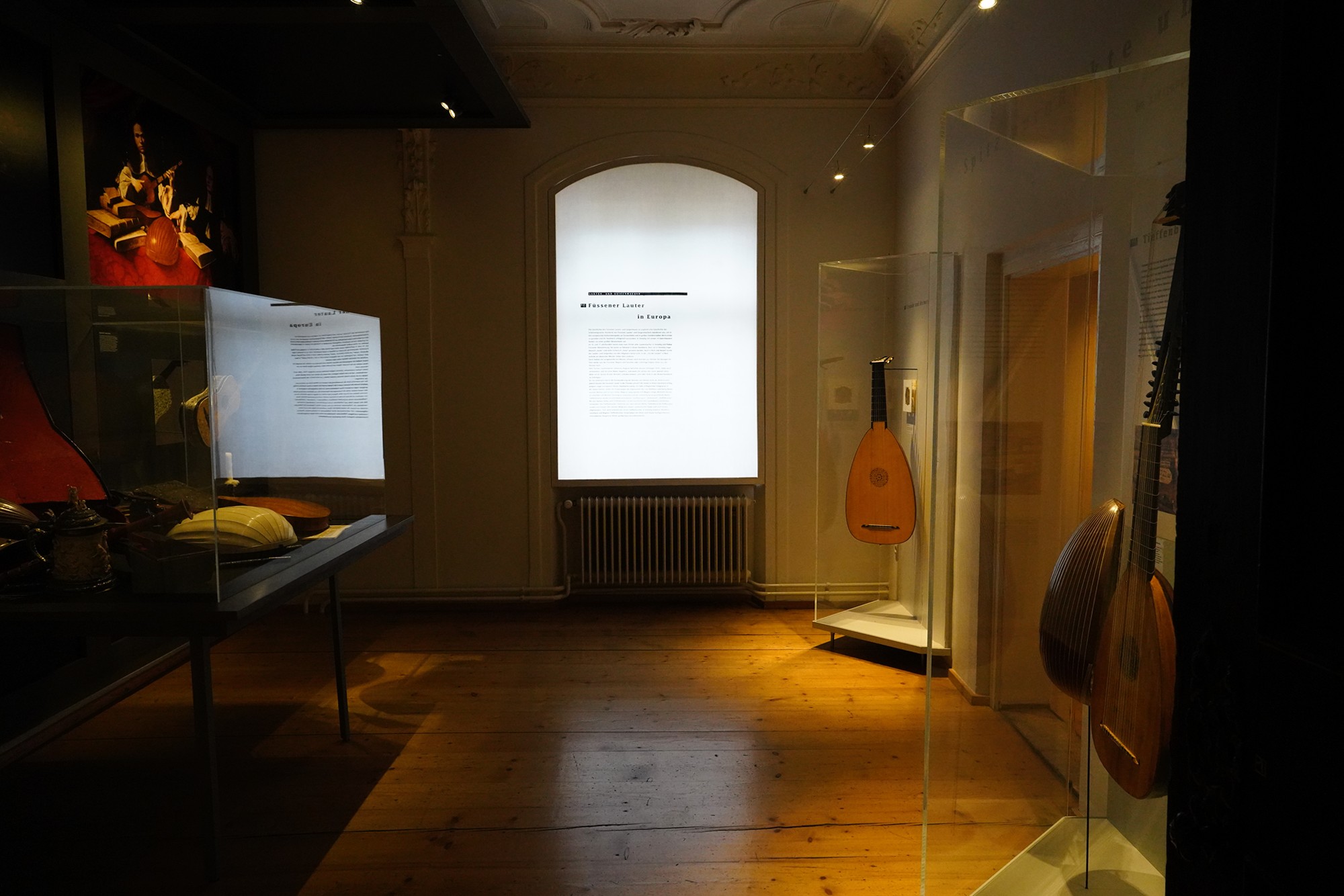





The monastery’s library, though not always open to the public, is one of the most important collections of religious and historical manuscripts in the region. The archives contain documents that trace the history of the monastery and Füssen, providing valuable insights into the cultural and religious life of the area.





History of the textile industry in the city







Out of the monastery

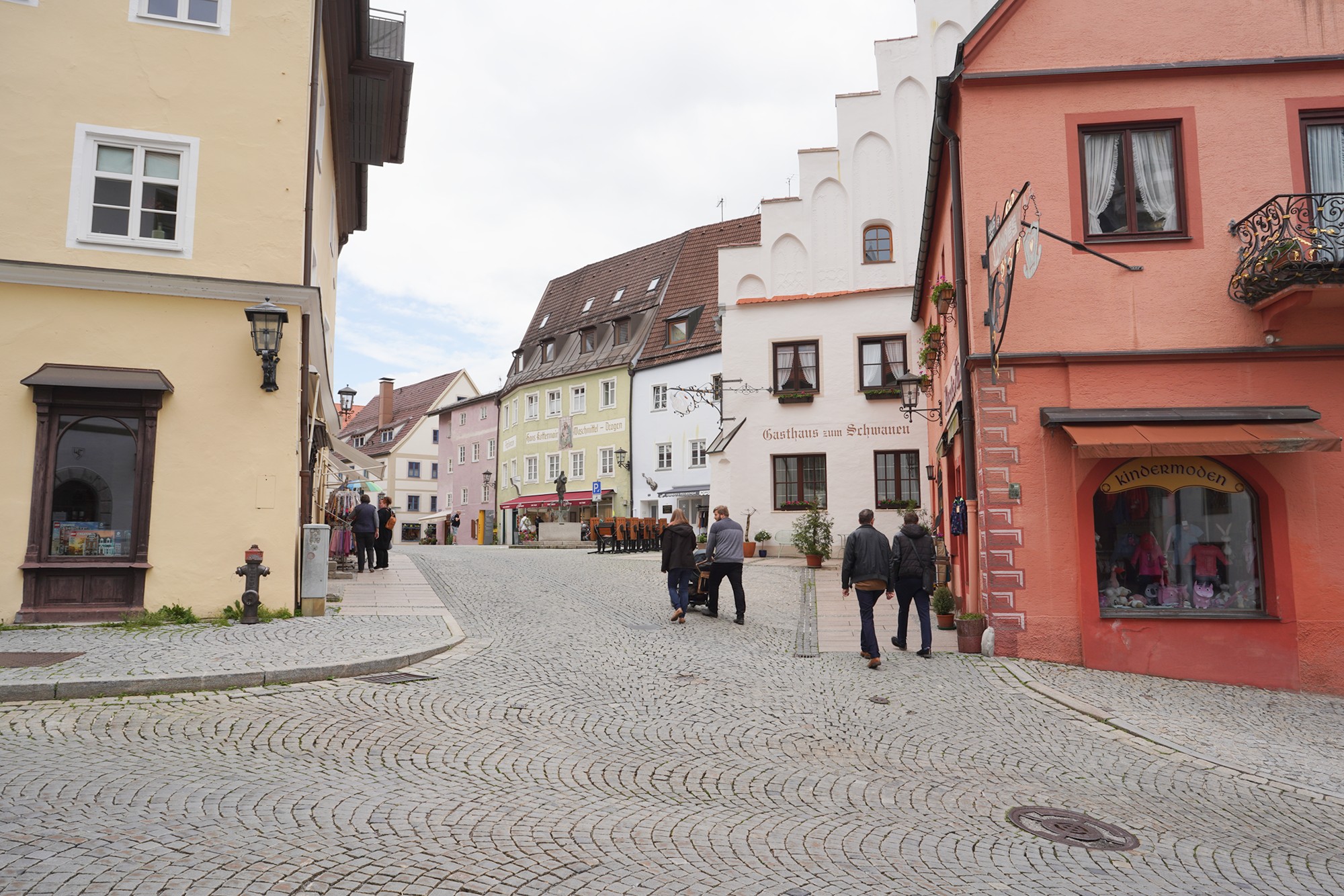
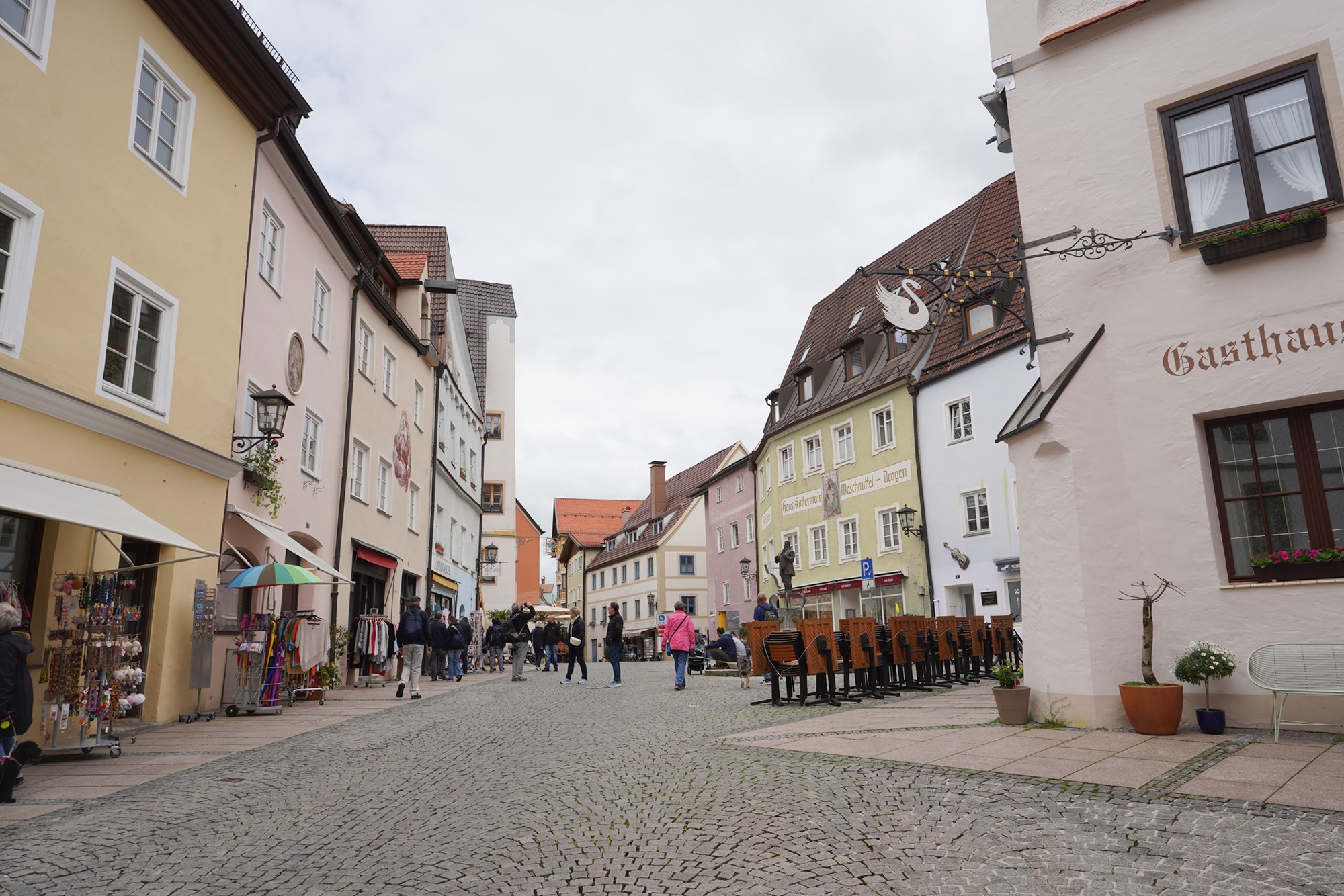







The city center
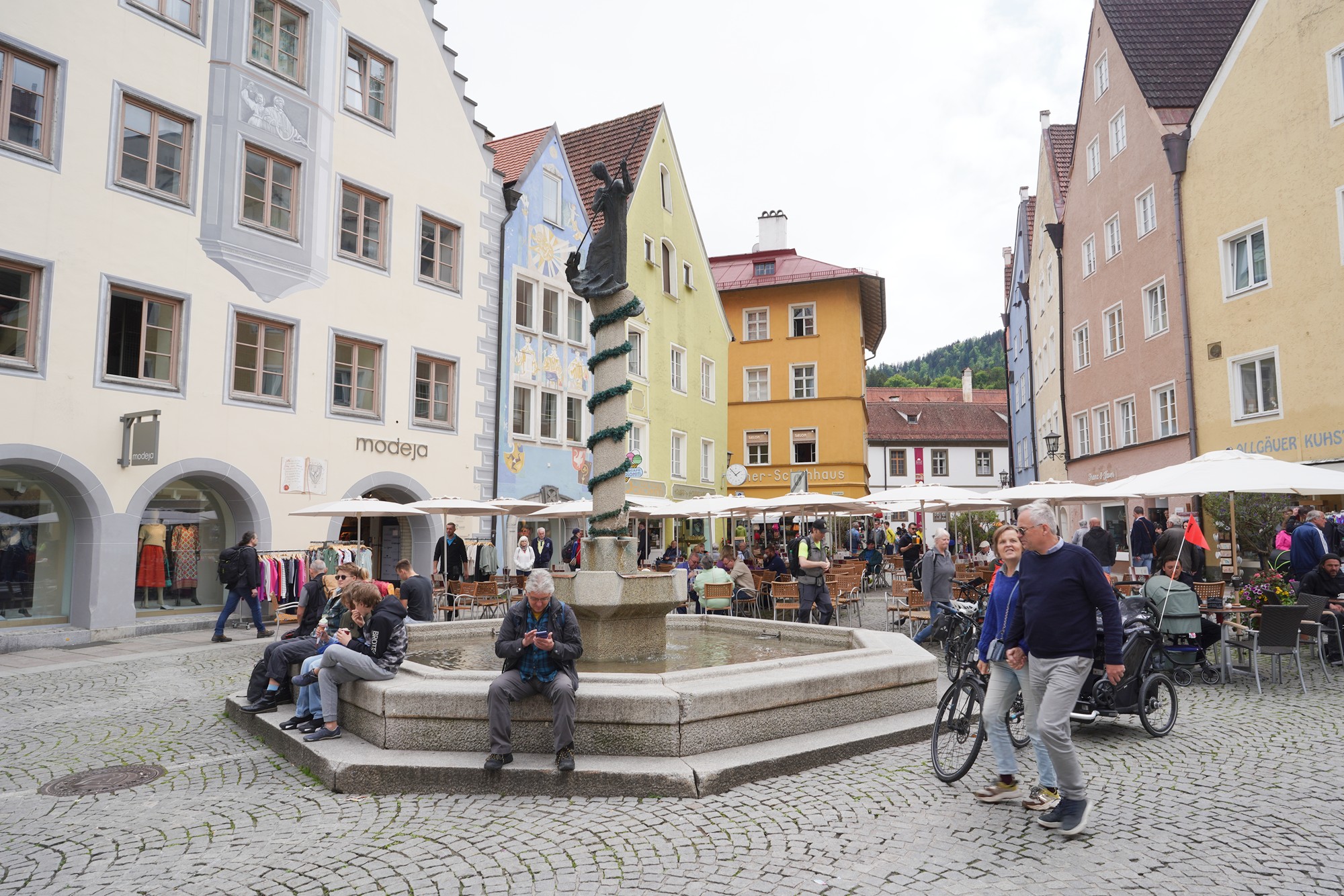






A model of the city





After walking around the city center, I returned to the monastery to see the Basilica of St. Mang, which is located at the back of the monastery (now a museum).

Walked toward the back of the monastery building, which is in the same direction as the city’s center.


The heart of the monastery complex is the Basilica of St. Mang, which is a masterpiece of Baroque architecture.


The basilica features a stunning interior with ornate altars, intricate stucco work, and beautiful frescoes. The high altar, with its depiction of St. Mang, is particularly impressive. The ceiling frescoes, created by the famous artist Johann Jakob Zeiller, depict scenes from the life of St. Mang and other biblical stories.



The Hohes Schloss Castle from the monastery.
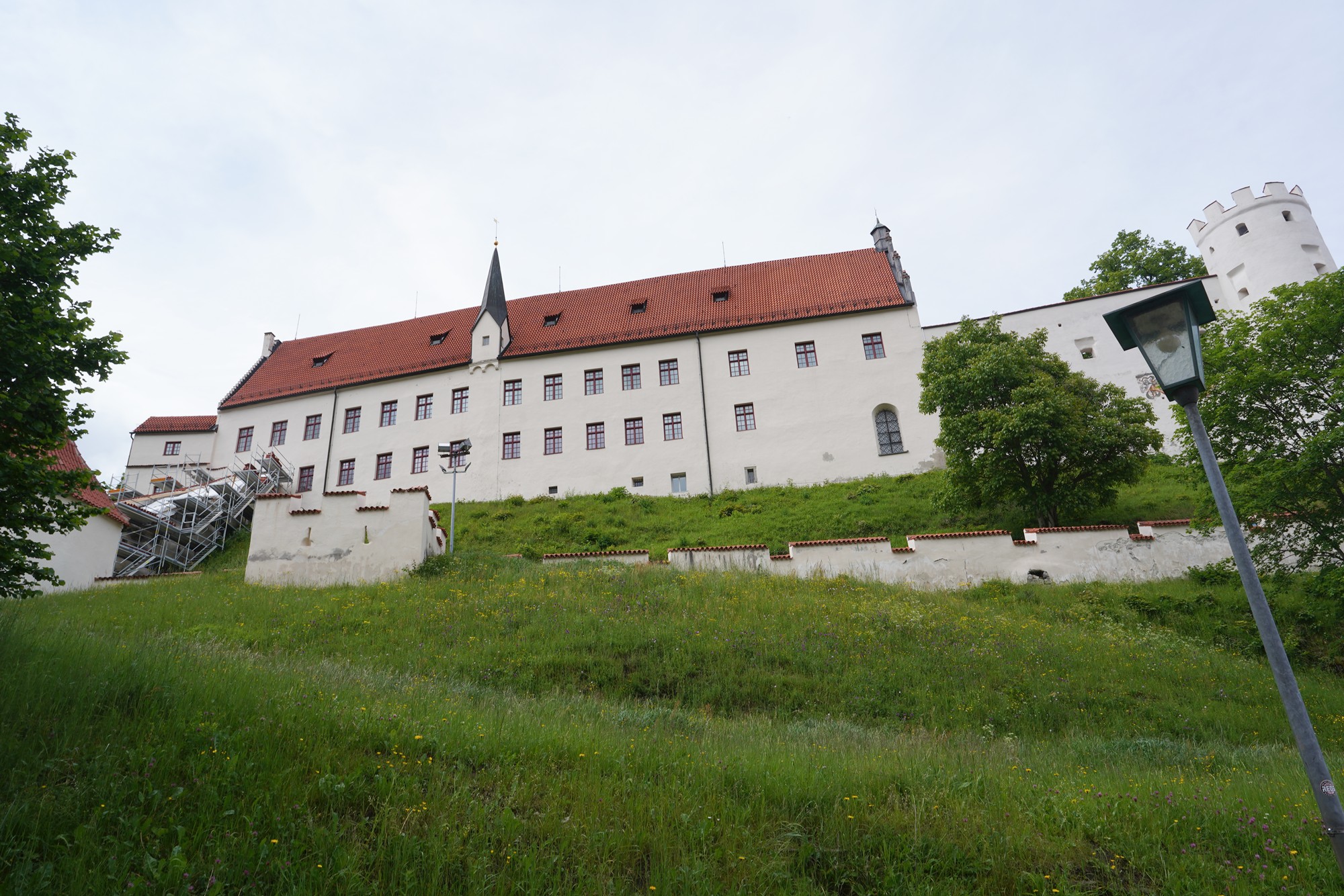
I walked up the hill and entered the castle.



The Hohes Schloss, or “High Castle,” is perched on a hill overlooking the town. This impressive Gothic castle is not only an architectural marvel but also a historical treasure that offers excellent views of the surrounding area.

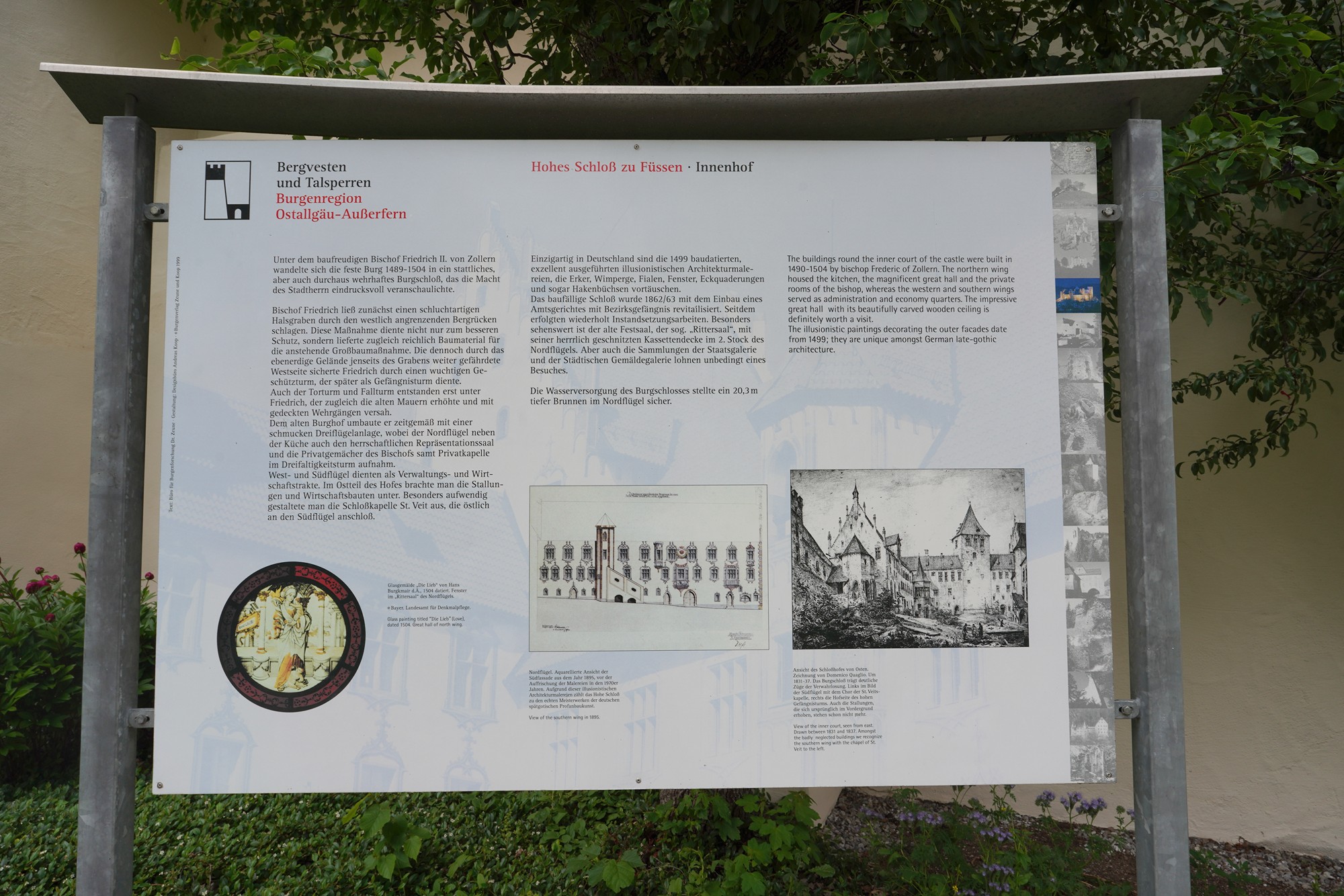

The Hohes Schloss was originally built in the 13th century and expanded in the 15th century as the residence of the Prince-Bishops of Augsburg. It served as their summer residence and a fortified stronghold, symbolizing the power and influence of the bishops in the region. The castle’s strategic location provided defense against potential invaders and offered commanding views of the Lech River valley.

The castle is a fine example of late Gothic architecture, characterized by its imposing walls, towers, and decorative elements. The design reflects the transition from medieval fortress to Renaissance palace, with elements that blend military functionality with aesthetic sophistication.


The castle’s inner courtyard is surrounded by the main residential buildings and is decorated with more frescoes. The courtyard was the center of life within the castle walls and has been well-preserved, offering visitors a glimpse into the castle’s past.



Today, part of the Hohes Schloss houses the branch of the Bavarian State Collections of Paintings, specifically the State Gallery in the Hohes Schloss. The museum exhibits a collection of late Gothic and Renaissance art, including works by well-known Swabian masters like Hans Holbein the Elder and Hans Burgkmair. The museum also showcases regional art and sculptures from the Gothic period.










The view of the town from the castle

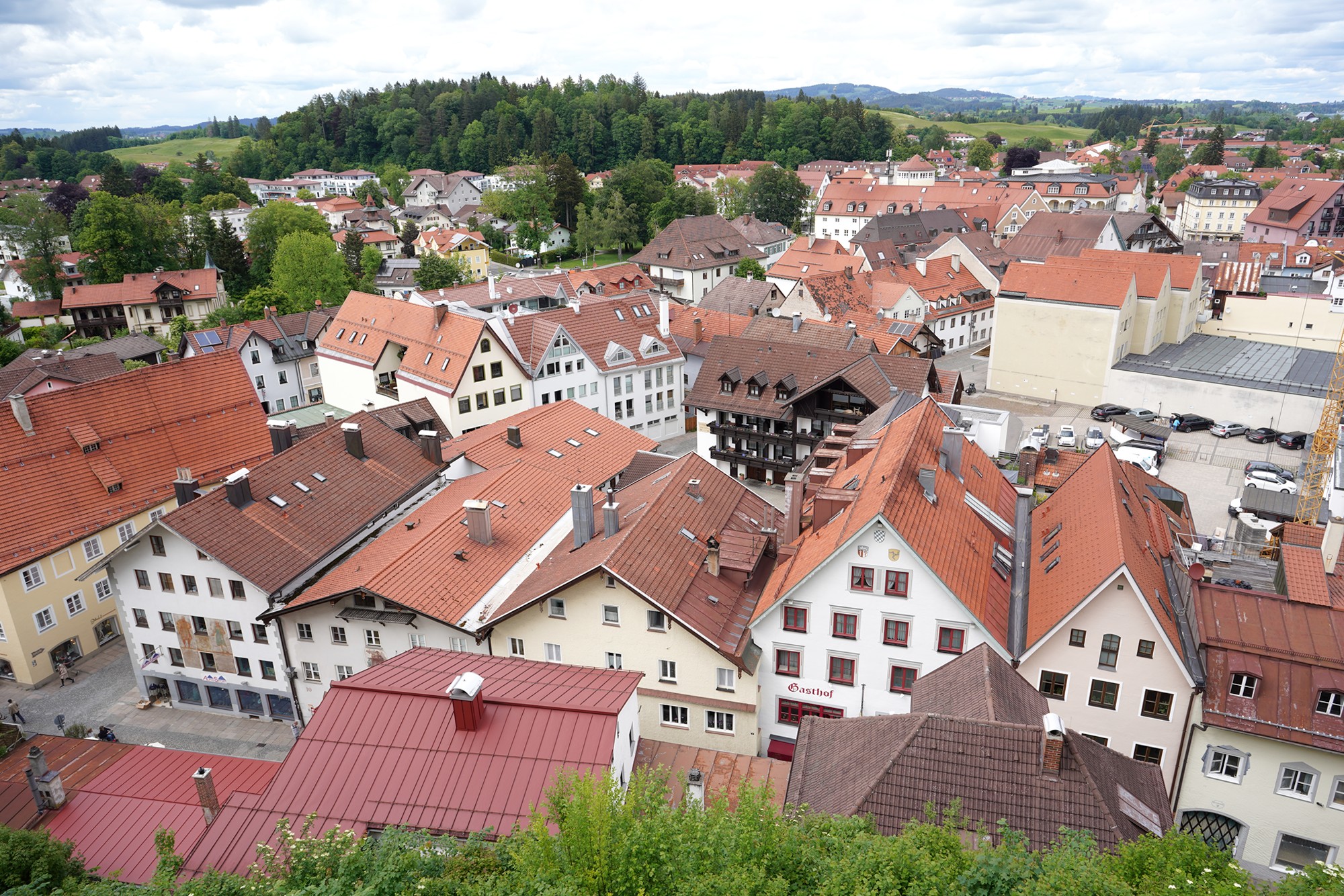






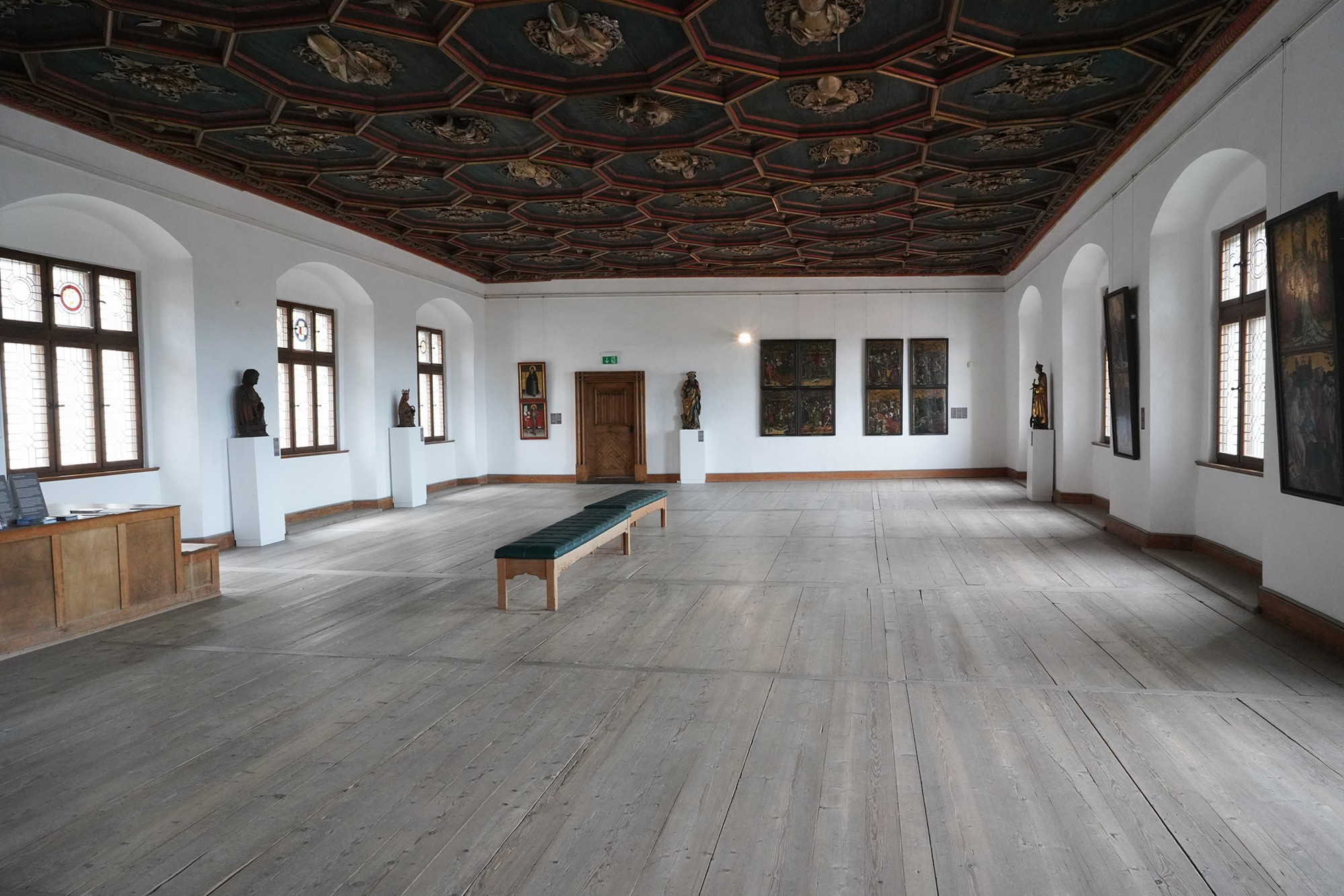

Out from the castle



I followed a trail from the city to Lechfall.

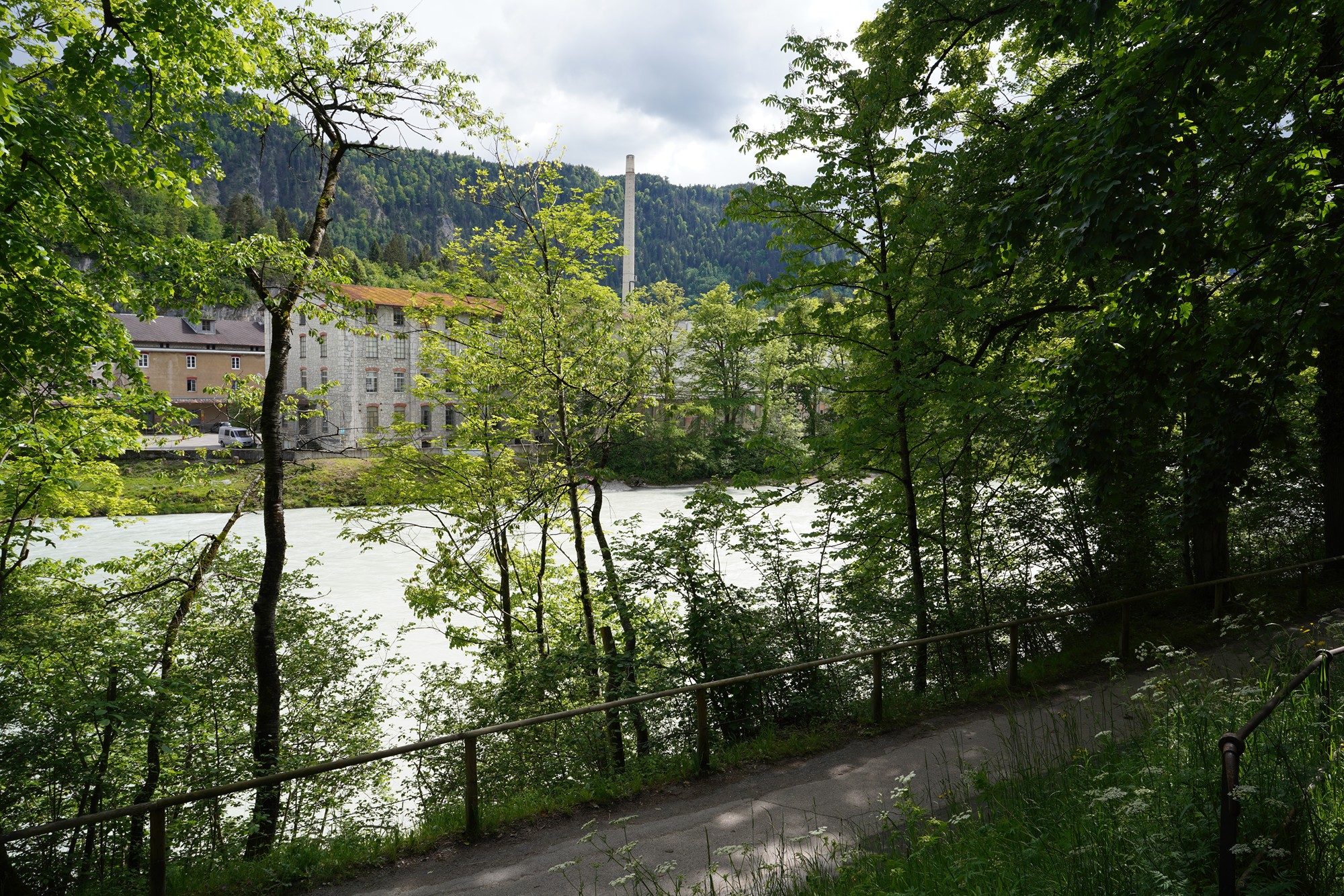



Lechfall. The Lechfall is situated at the narrow Lech Gorge, where the river is channeled through a tight passage between steep cliffs. This gorge marks the point where the Lech River leaves the mountainous region and enters the flatter terrain of the Alpine foothills.


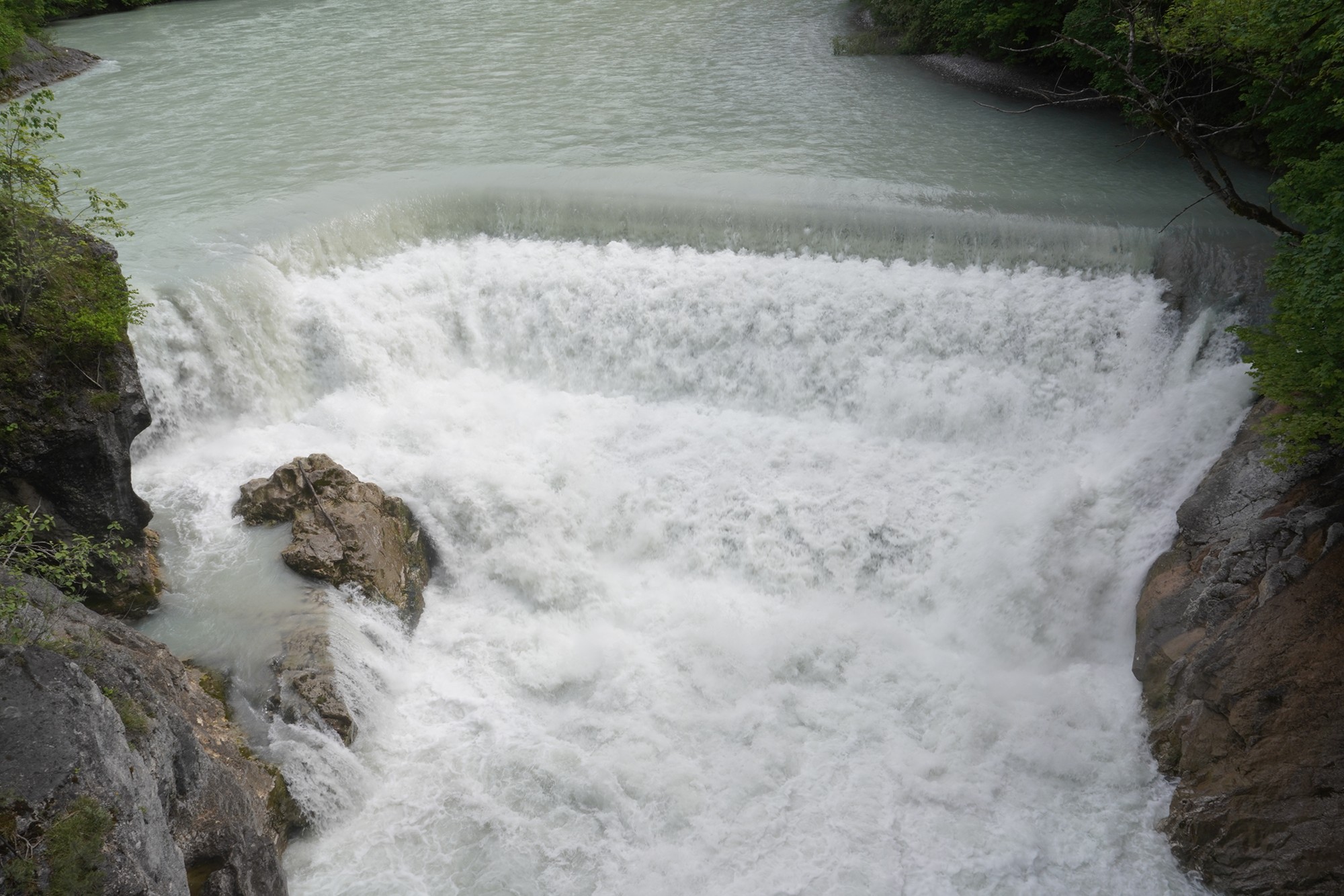
Walked back to the city

Looked back


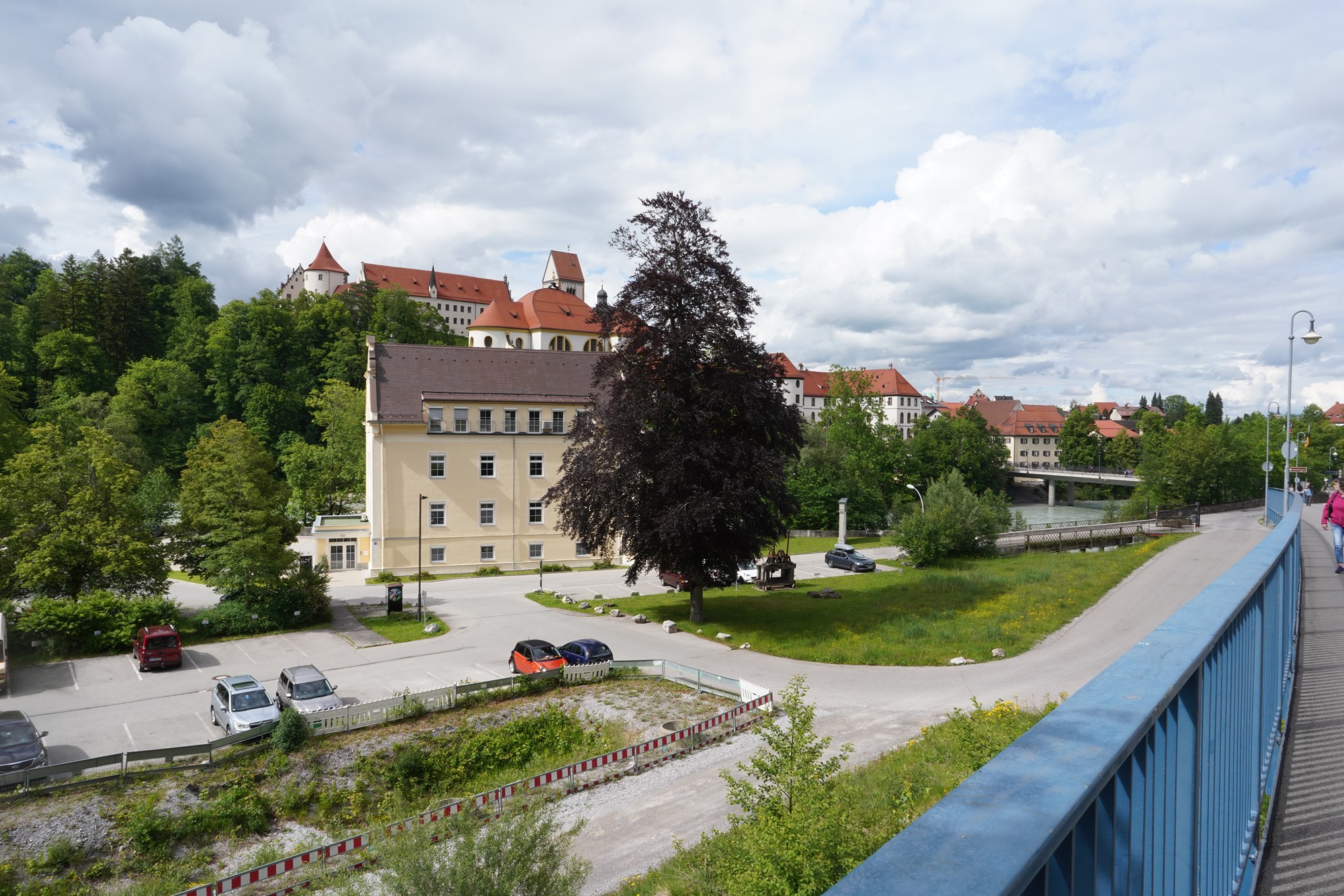


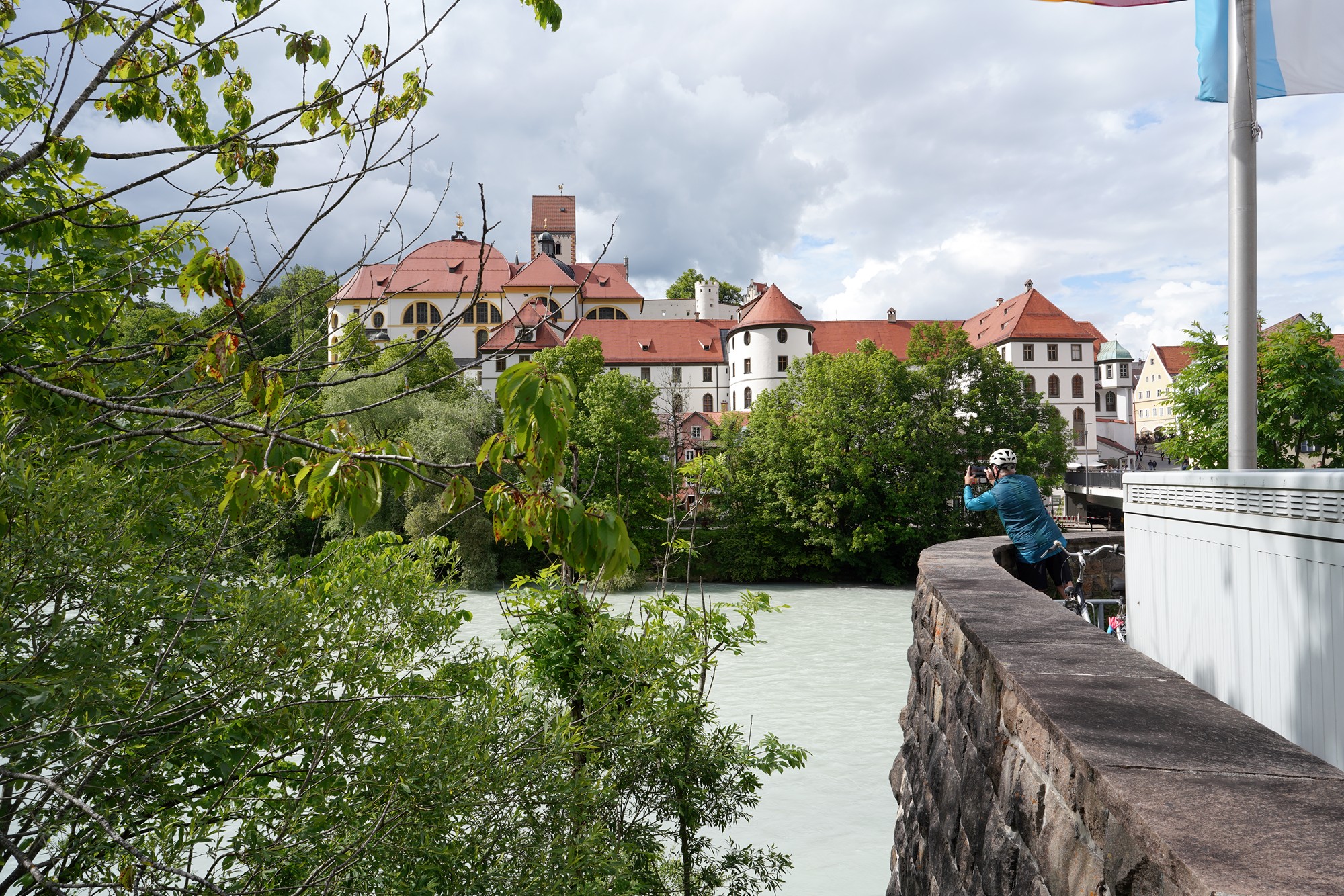
Benedictine monastery of St. Mang

Came back to Lechbrücke Bridge




Came back to the city center

